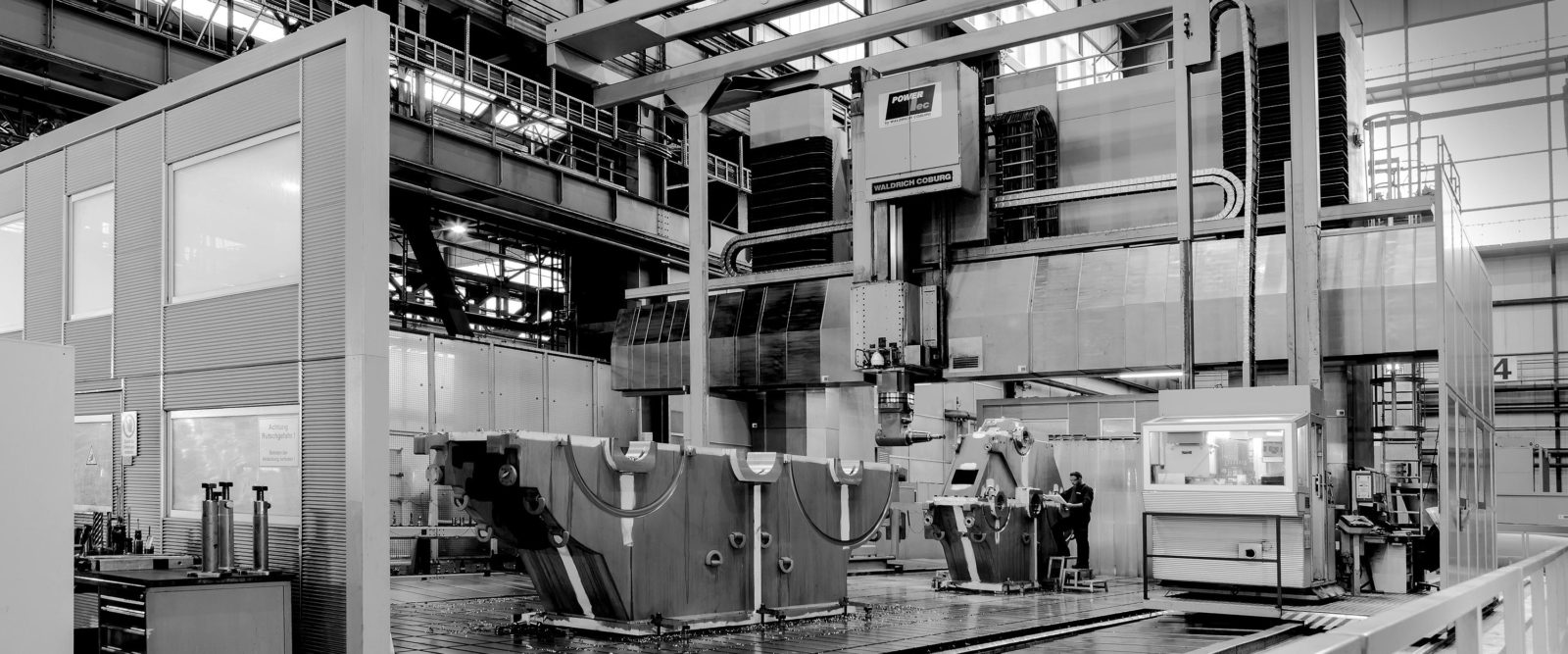How can hydrostatic guideways take your machining to the next level?
CNC machines have evolved to the point where they can consistently machine to extremely fine tolerances. This has been made possible with advances in machine design, materials, thermal control, tooling and so on. In this article, CNC linear guides will be analysed, specifically the hydrostatic guideway, which refers to a guideway that does not rely on rolling contact bearings but rather floats on a high-pressure film of oil. This may sound like a step backward on the path to next-generation machining but is in fact on the cutting edge of linear motion.
Contact a Kingsbury representative today
Types of linear guideways
In order to fully appreciate the benefits of hydrostatic guideways, it is necessary to introduce the competing technologies and briefly explain their design philosophy. This will create a better understanding of what will follow later in this article.
- Sliding contact – The most basic form of linear bearing consists of direct contact between two surfaces. This results in high friction and is not well suited to high-speed, high-accuracy applications.
- Rolling element – This form of linear bearing consists of captive balls/rollers that result in a smaller contact area between surfaces and, therefore, lower friction. This system is widely used in CNC machines today.
- Magnetic – An advanced yet impractical system; magnetic linear rails make use of repelling magnetic fields generated by an electromagnet to force the carriage to float above the rail with no contact. This system is incredibly expensive with limited use.
How do hydrostatic guideways work?
Hydrostatic guide rails take advantage of the incompressibility of oil. Basically, oil is pumped at high pressure into various cavities in the carriage; the resulting oil film can be as thin as 0.015mm. This oil film has the dual function of providing a smooth, nearly frictionless, contact between the rail and the carriage and also reducing vibration in the machine. Due to the extremely high load-bearing capacity of this oil film, hydrostatic guideways are ideal for supporting the weight of heavy, gantry-style machines like the Waldrich Coburg Gemini.
Advantages of hydrostatic guideways
The advantages of hydrostatic guideways are numerous. Some of the most relevant ones are summarised below.
Stiffness & accuracy
Preloading a rolling element guideway has the advantage of increasing the stiffness but at the same time increasing the sliding friction and wear rate. Hydrostatic guideways do not have this problem because increased oil pressure improves stiffness without increasing friction. Due to the high rigidity possible, improved accuracy with movements of 0.1 microns is possible.
Due to the oil film, the stick-slip phenomenon that is ever-present in roller contact guideways is also eliminated due to there being no physical contact between carriage and rail. This further improves accuracy by ensuring smooth motion at any speed.
Improved lifespan
There is no contact between the guideway and the carriage and therefore there is no metal-to-metal wear. This means that a hydrostatic guideway can last much longer than any other type of guideway, sometimes as long as the life of the machine. These guideways are generally more robust in the event of accidental machine interactions because the increased load on the cutting head results in increased pressure in the guideway, thus ensuring that the oil film is always present between guideway and rail, serving as a protective barrier.
Foreign debris and metal shavings do not have as negative an effect on hydrostatic guideways as they do with roller contact guideways. This is due in part to the seals that are required by default to keep the oil contained in the carriage.
Damping
Vibration is the bane of many machining operations as it can result in poor surface finishes, reduced tool life and impaired accuracy. Hydrostatic guideways help reduce the effects of vibration caused by resonant frequencies, which allows for faster machining without sacrificing surface quality and tool life. This is due to the natural dampening effect of a fluid, regardless of how thin the fluid film is.
Lower cost per part
Because of the above-mentioned benefits, the cost per machined part is reduced due to lower maintenance costs (a result of longer-lasting guideways), improved surface finishes and lower tool wear due to reduced resonant vibration on the cutting tool.
In conclusion
Hydrostatic guideways are ideal for demanding machining applications and simply cannot be matched by other guideway technologies and techniques. These guides used to be bulky and expensive but newer-generation designs result in smaller form factors and reduced costs. One of the industry leaders in implementing this technology in their machines is Waldrich Coburg, to find out more about how a machine that makes use of this technology can specifically benefit your unique machining requirements, contact a Kingsbury representative today.
